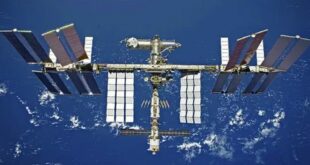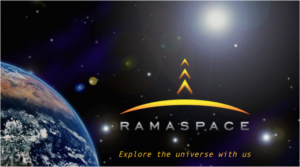 The fourth part of our #SWMEThemes on the Middle East and Space Resources is an interview with Andrey Maximov and Raghu Das of Ramaspace, and explores their view on space resources, asteroid mining, and the impact of the new Luxembourg space resources law.
The fourth part of our #SWMEThemes on the Middle East and Space Resources is an interview with Andrey Maximov and Raghu Das of Ramaspace, and explores their view on space resources, asteroid mining, and the impact of the new Luxembourg space resources law.
SWME: Can we begin by talking about the establishment of the company? What made you go into the world of asteroid prospecting and mining?
Raghu Das: The management behind Ramaspace are all from the space industry. That includes myself, our technology partner team from Dauria Aerospace company, and Andrey Maximov who is bringing his IT and technology expertise to the industry.
Using spacecraft for communications is a very good, solid business, but we realised that we could very easily design a spacecraft that could also be used in space exploration. We decided to develop a business line in space exploration that would also be commercial. Up until now, space exploration has been a very scientific realm. It has never really been commercialised. We thought that asteroid mining would add a commercial face to it. That’s not to say that we would not take on scientific missions. From a business perspective, we have been following the concept of asteroid mining very closely and we have seen a growing interest from investors over the last three years. We have been very intrigued by that and we think there are many opportunities. I think that the time is now.
The interesting thing that is happening in parallel is thefact that there is a lot of interest in the space industry that has been driven by interest in what Elon Musk and Jeff Bezos and other space entrepreneurs are doing. All these guys are looking at humans living in space, or building out human habitats. You can’t build a habitat somewhere without having the supply chain. We thought about this supply chain issue and we found that we could provide materials as they are needed. Asteroids have lots of materials that can be accessed and then utilised in space or back on Earth. We believe that we could be the supply line for the space exploration business.
Andrey Maximov: From the investors point of view, the returns that are possible from asteroid mining are significant when compared with the returns offered by other space businesses such as Earth observation, Internet for everyone or Internet of Things.
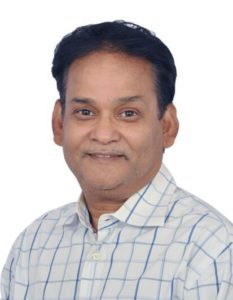
SWME: Ramaspace’s mission is to make asteroid mining more accessible and more affordable but there are some pretty big hurdles to overcome as it is a young and emerging industry. What would you say are the main challenges you face at the moment?
Raghu Das: I think that making the technology available at the right price is the biggest challenge. The technology basically exists but is very expensive. We need to make it affordable. We are working on creating a mission that is affordable for commercial companies, individual countries or space agencies. It needs to be made more attractive commercially.
SWME: In a nutshell, how does Ramaspace hope to make it easier to prospect and mine resources from asteroids?
Raghu Das: Ramaspace will basically provide the supplies for space and asteroid exploration. We can mine the asteroid ourselves or someone else can mine, but we provide the materials that will enable both asteroid mining and space exploration. What we are doing is investing in technology and making spacecraft lighter and more fuel efficient in terms of battery life and propulsion.
The other big challenge for any space exploration customer is the launch vehicle, which is very expensive. We are trying to make the spacecraft lighter so that we can get into a piggy back or rideshare arrangement to Geostationary Transfer Orbit (GTO). The big challenge is escaping the Earth and engineering the spacecraft to be as light as possible will help with this.
The other important aspect is propulsion and power management. We are looking at different technologies for propulsion which can give the right amount of thrust. So we are focusing heavily on those two areas right now. We are working with a few companies to find out how we can make our propulsion system more efficient.
Andrey Maximov: Speaking of challenges, I think that aside from the quality challenges that Raghu mentioned, one of the most important things to consider is the right business model that will make sense for the early customers. In an emerging industry, it is very difficult to plan ahead and to plan your next step. That is where the Luxembourg government helps us out. They are closing this gap in the industry. They are laying out a legal framework and planning for the survival of companies that are coming to this industry early.
SWME: What kind of interest are you getting in the platform at the moment and who do you see as you target customers? Have you had any potential customers come forward?
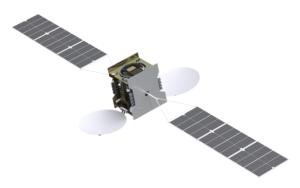
Raghu Das: There are three main areas in terms of marketing to customers. The first is to work with different space agencies that do not have these capabilities. We will work with them to develop missions collaboratively or independently. There are a few countries that we have identified that have space aspirations but do not have the technology available to them.
The second approach is to find the people and companies who have a real interest in asteroid mining. There has been a lot of coverage and hype about it in the press and this has created a general awareness. We are looking for visionaries who are prepared to invest in an early mission.
Finally, the fact is that mining in space is really not that different from mining on Earth. Initially, you spend a few years at least exploring or finding out whether there is something worth mining. Then it takes several years to secure rights and sort out the legal and economic issues, and then you go into the third phase which is actually carrying it out.
Asteroid mining is really no different. Firstly, you need to find out which asteroid can be mined. We have a great contract with an astronomical society to figure out which asteroid is suitable in which orbit. The next phase is to understand what it will take to get rights. Luxembourg has already taken a very strong, bold step towards that, but there are still issues to be settled.
This could be a very interesting prospect for the big mining companies. They may be interested in bringing asteroid mining into their portfolio. After all, resources on Earth are running low. Space is the next frontier. So, to recap, I think we are looking at individual investors, countries and space agencies and mining companies as our target customers.
SWME: How challenging is it to attract investors? This is something that is not commercially proven, and fraught with risk.
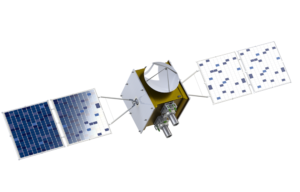
Raghu Das: It is very challenging. There are two kinds of investors. Firstly, there are the knowledgeable investors who have seen this coming or have invested in other space industries. For example, our first investor is I2BF Global Ventures and they are very knowledgeable about the industry. They were the first to invest in Planetary Resources, so they have a good depth of knowledge about what we are doing.
The second type of investor is those that don’t have knowledge of asteroid mining or of space in general. Some say that it can’t be done, but others say let’s go for it. We get mixed feelings from potential investors who are not knowledgeable in space investment or have not done space investment. It is challenging, but we are getting traction. We have our first 5 million which isn’t bad for 6-7 months of pitching. We are looking at closing at the end of the year with about 15 million or so.
Andrey Maximov: The best outcome for us is to get attention and funding from companies and funds that have long-term planning horizon of 15–20 years. This narrows your funnel to certain industry players such as mining companies, oil and gas giants, certain sovereign funds and institutional investors.
SWME: We appear to have an impending smallsat launch problem. There are new vehicles being developed but they’ve not been proven and there are a lot of smallsats in the pipeline for launch which could result in a large backlog. Do you see this as a problem for Ramaspace going forward?
Raghu Das: Yes, there are a lot of satellites coming up. However, I think launch capacity levels are actually going up if you look at Rocket Lab and other companies that are developing launch vehicles. I think that existing launch companies are increasing their capacity.
We just have to act smart, because our objective is to get a good price for the launch. It takes two years to do the initial planning and, in the space business, we start by looking at the launch. Then you can go backwards. In space exploration, when you are launching and what orbit you are launching into decides what your trajectories are going to be. We are looking at a 2019 launch and we want to go to GTO. We are looking at a hosted payload or a piggyback launch. We just need to find the right launch provider. I do believe that if you plan well, it shouldn’t be a problem.
SWME: When the asteroid resources are actually obtained, how are they to be processed? Will this happen on Earth or in space – or both?
Raghu Das: That is a very difficult question because so many theories are being discussed today. We are exploring a lot of possibilities. Our first demonstration mission will happen in a stable orbit between the Moon and Earth. We believe that could be a sort of parking lot where the resources could be processed or stored in the future. We will also look to see whether re-entry is a possibility. The other option is to push the asteroid near to the Moon’s orbit and then doing the mining there, depending what you are mining for. If you are mining for water it may be able to be done in the orbit of the asteroid but if you are doing metal mining you may have to bring it back to the lunar orbit. It is not yet clear.
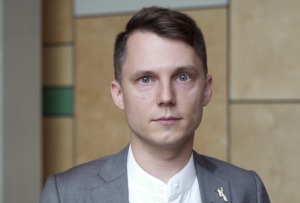
Andrey Maximov: It all depends on where the market will go so we have to be prepared for different scenarios. For any space resources company having their end users and customers in space is an ideal scenario. They could then buy the materials on orbit, be it in the lunar orbit or the LEO. If SpaceX succeeds with their plans for Mars missions, Bigelow and Nanoracks will build their commercial space stations in LEO, NASA builds a base in lunar orbit and if satellite servicing becomes reality, all of this would create a market for on-orbit services. However, oil and gas companies and mining companies may prefer to have their sample brought back to Earth as they may choose to perform analysis in their laboratories on Earth. They are not in the space business and would opt for traditional methods of exploration and risk mitigation. There are different types of customers and we need to look at the way the market develops.
SWME: There are lots of legal questions over the ownership of any materials mined. How will that be determined?
Raghu Das: We are in full support of the work that Luxembourg is doing in this area. Whilst it is a commercial industry, we also need to remember that what we are doing today is something that will help humanity. Space has to be used for peaceful purposes, for humanity. That is the first objective of the UN treaty. I truly believe that what we are doing today in terms of space exploration or asteroid mining is going to do better for people’s lives. We certainly do not believe that this is a new thing that everyone should rush into – quite the opposite. I think that we have to work with many space agencies so that we take responsibility for what we are doing and that the legal framework is very carefully worked out and, at the moment, Luxembourg is coordinating these efforts.
Andrey Maximov: As far as I am concerned, the space mining law should be passed by Luxembourg government by the time this article is published.
SWME: What is your roadmap going forward over the next year?
Raghu Das: The first thing will be a demonstration of our capabilities and also to develop the technology. We will prepare our smaller platform ready for a prospecting mission in 2019. Then we also have a bigger spacecraft which is a different mass. We will launch the first one into GEO to make sure it operates well and to test the technology. Our other area of focus will be market our capabilities to the customers.
We are also looking at establishing a Technical Resource Centre in Luxembourg. We have a few technologies that we need to develop and that will happen there. We will also be finding a launch service provider. We are already looking at some providers at the moment including Arianespace and ISRO and we are also trying to keep things ITAR free, which will give us much more flexibility. These are the main things we need to do to perfect the mission plan.
Raghu Das has over 20 years’ experience working with telecommunications, satellite and information technology companies. He was a co-founder and Senior Vice President of ProtoStar, a US-based company that owned and operated two communication satellites serving the Asian direct-to-home market. Raghu was also a senior executive with Loral Space and Communications for 10 years, serving as Managing Director of Loral Skynet-Europe and MENA, VP of Sales for Loral CyberStar, and Director of Technology for Loral-Orion before Loral.
 SpaceWatch.Global An independent perspective on space
SpaceWatch.Global An independent perspective on space

